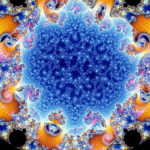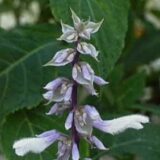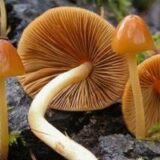Table of Contents
Chemical Structure of Hallucinogens

What Are Hallucinogenic Plants?
Hallucinogens are many things to many different people. To some people, hallucinogens are a connection with another world, a spirit world…a way for them to communicate with deceased relatives or ancestors. Other people may use hallucinogens to communicate with their gods. They are religious aids in many ceremonies, and considered sacred. We are likely still interested in hallucinogens today in many cases (especially in Western culture), due to their ability to allow man to escape every day life for a world of euphoria and imagination, and colors! But what are hallucinogens? What makes them hallucinogenic in effect?
By general definition, hallucinogens are chemicals or substances that provide some sort of hallucination, be it visual, auditory, tactile or in taste or smell. Usually hallucinogens are associated with extreme visual effects which could be described as psychedelic. Pharmacologically, hallucinogens typically look a lot like other plants. In fact, there are usually only a very small number of chemicals present in a hallucinogen which are responsible for creating the hallucinogenic effects by which the plants are known. While all hallucinogens may be different, a surprisingly large number of species are either very closely related, mimic each others hallucinogenic effects or chemicals, or even substitute for one another in ceremonies or as analogs.
Hallucinogens are Alkaloids

There are a lot of chemical compositions which can make up a plant. When it comes to hallucinogens, there is one element present in nearly all of them: nitrogen. Because nitrogen is found in nearly all hallucinogens, the chemical compounds known as hallucinogens are technically alkaloids. Alkaloid means a nitrogenous metabolic product of plants with alkaline properties. There are two plants most notable for being excluded from the nitrogen rule, but still considered hallucinogens: Hemp and Salvia divinorum.
Hallucinogens Are Closely Related to Brain Chemicals
The chemicals the human brain naturally produces, brain-hormones which are known as neurotransmitters. It is because they are so similar that they are able to have such a influential role in the biochemistry of the brain. There are many examples which indicate a remarkable resemblance between the two worlds of brain chemistry and hallucinogens. One example would be the mescaline alkaloid found in the Peyote cactus. Mescaline is extremely similar in chemical structure (as a compound) to the neurotransmitter norepinephrine. It is true that mescaline shares the same basic chemical structure as norepinephrine. Furthermore they are both well known to come from phenylethylamine. Mescaline also shares a similar chemical structure to noradrenaline.
Psilocybine and its often accompanying psilocine are found in a lot of mushrooms, but also are derived from the same basic chemical compound of serotonin. Serotonin is a well understood, well known brain chemical and is derived from tryptamine. Psilocybine and psilocine are also derived from tryptamine. There are other hallucinogen-derivatives of tryptamine, such as Morning Glory (the Mexican hallucinogen Ololiuqui).
Most Powerful Hallucinogenic Alkaloids
The most powerful naturally occuring hallucinogenic alkaloids are simple to list all on one page.
- Psilocine is the hallucinogenic principle that comes from Teonanacatl.
- Psilocybine also comes from Teonanacatl.
- Mescaline comes from the Peyote cactus in Mexico.
- Lysergic acid amide is the hallucinogenic principle of Ololiuqui, and LSD and iso-LSD are a semi-synthetic hallucinogens modeled after Lysergic acid.
- Lysergic Acid Hydroxyethylamide also comes from Ololiuqui.
Shaman’s Last Words on Hallucinogenic Alkaloids

Hallucinogens may seem complicated and a little daunting, however, they are (by design) quite simple in chemical structure. In fact, they are so simple they are often nearly identical to chemicals that are already found naturally occurring in the brain. They are not as complicated as people may think and can be reduced to a few botanical anomalies in the wild. When properly employed, cultures have demonstrated responsible use for religion and recreation alike, however, likewise: when the drugs are overdosed, misery and suffering ensue! Although hallucinogens may be chemically simple by nature and eerily similar to human neurotransmitters, they are still capable of dangerous, sometimes fatal effects when used by amateurs.




